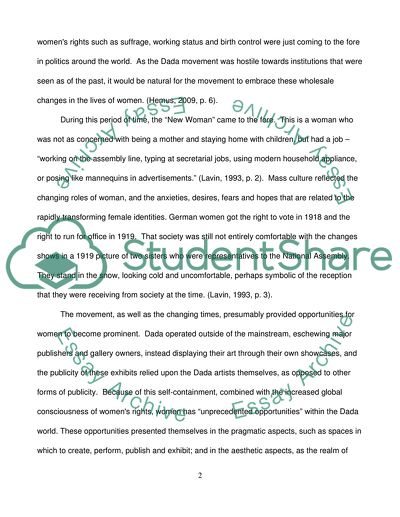Cite this document
(“Dadaism: Hannah Hochs and the Dada Movement Research Paper”, n.d.)
Dadaism: Hannah Hochs and the Dada Movement Research Paper. Retrieved from https://studentshare.org/social-science/1736666-women-in-dada-feminists-or-not-with-specific-focus-on-hannah-hoch
Dadaism: Hannah Hochs and the Dada Movement Research Paper. Retrieved from https://studentshare.org/social-science/1736666-women-in-dada-feminists-or-not-with-specific-focus-on-hannah-hoch
(Dadaism: Hannah Hochs and the Dada Movement Research Paper)
Dadaism: Hannah Hochs and the Dada Movement Research Paper. https://studentshare.org/social-science/1736666-women-in-dada-feminists-or-not-with-specific-focus-on-hannah-hoch.
Dadaism: Hannah Hochs and the Dada Movement Research Paper. https://studentshare.org/social-science/1736666-women-in-dada-feminists-or-not-with-specific-focus-on-hannah-hoch.
“Dadaism: Hannah Hochs and the Dada Movement Research Paper”, n.d. https://studentshare.org/social-science/1736666-women-in-dada-feminists-or-not-with-specific-focus-on-hannah-hoch.


